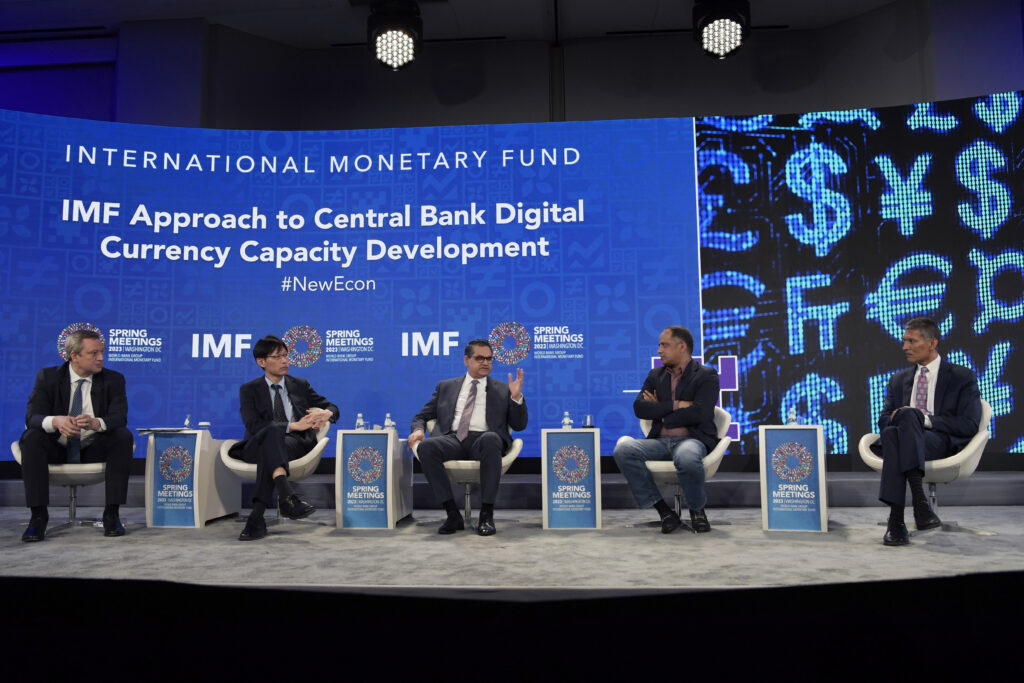Policymakers globally have shown great interest in central bank digital currencies (CBDCs). Encouraged by institutions like the International Monetary Fund and Bank for International Settlements, over 130 countries are exploring the concept of CBDC development. But global experts have expressed concerns that CBDCs may potentially pose significant problems.
Experts from the International Monetary Fund and the Bank for International Settlement have issued warnings about how CBDCs are regulated. This is because CBDCs would give the central bank absolute control over the rules and regulations governing the use of that specific form of central bank liability. This control is further empowered by their capability to enforce regulations through technology.
CBDCs are digital forms of a country’s fiat currency, issued and regulated by the central bank. Unlike cryptocurrencies, CBDCs are centralised and typically have legal tender status. They aim to modernise payment systems, enhance financial inclusion and provide a safe and efficient medium of exchange.
There is dangerous potential for government control over individuals if money is purely electronic and directly provided by the government. CBDCs could allow government agencies and entities to program targeted policy functions, specifying how money can be used and what individuals can own.
The absence of widespread adoption could serve as confirmation of these concerns, as could a lack of evident utility. This appears to be the situation in Nigeria, where citizens have expressed their discontent by protesting against the cash shortage caused by the government’s efforts to transition to a 100 per cent cashless economy through the implementation of a CBDC.
Thailand appears to be another nation making assertive yet financially questionable moves to encourage CBDC adoption. The plans to distribute 10,000 Thai baht (US$ 288) to citizens through a CBDC faced delays as the government grappled with identifying the required 548 billion baht (US$15.5 billion) for the handout. Ultimately, the prime minister disclosed that the funding would come from government loans.
The Reserve Bank of India (RBI) is conducting retail and wholesale CBDC pilots. Though commenced on 1 December 2022, the RBI has not outlined a timeline for full-scale retail CBDC rollout. India’s existing cashless movement — through the Unified Payments Interface — has had trouble achieving high transaction volumes, averaging only around 25,000 per day. The RBI has been actively working to enhance transaction volumes. But it is still early days for CBDCs in India and there is overall optimism about their potential.
Not all CBDCs are struggling, as exemplified by China’s successful implementation of its CBDC. In 2023, China’s e-CNY initiative witnessed significant growth, with total transactions reaching 950 million and a cumulative value of 1.8 trillion yuan (US$250 billion) by June, showcasing a remarkable surge from 2022. With 120 million wallets opened, the CBDCs expansion is evident. China’s CBDC has the potential to enhance overseas adoption of the Chinese currency, mitigate Western sanctions risks and challenge the dominance of the US dollar.
The Bakong digital currency initiative, launched by the National Bank of Cambodia in 2020, has shown remarkable success. While often referred to as a CBDC due to being operated by the central bank, Bakong is technically a tokenised deposit system because it operates as a liability of commercial banks in a heavily dollarised economy. Bakong has witnessed exponential adoption, surpassing 10 million accounts, with a primary focus on enhancing financial inclusion.
In 2022, the National Bank of Cambodia introduced unified QR code support for Bakong, aiming to standardise transactions across over 50 financial institutions within the country. Collaborative efforts with AliPay have enabled residents to access services from AliPay merchants, complementing existing partnerships with China’s UnionPay. The National Bank of Cambodia has pursued CBDC integration with neighbouring countries such as Vietnam, Thailand and Laos, with varying degrees of progress. Beyond Southeast Asia, Cambodia is exploring CBDC collaborations with the central banks of Fiji, Rwanda and Solomon Islands, signalling a bold endeavour to reduce reliance on the US dollar in international transactions.
Evaluating what CBDCs have promised versus what they have delivered, or aspire to deliver, is crucial, given that most CBDC projects are still in their early stages. It is essential to assess CBDC success based on principles like efficiency and promotion of financial inclusion, though context plays a significant role. While some economies readily adopt digital payments, countries like Germany still heavily rely on cash. Success in one region may not necessarily translate to success everywhere else.
Adherence to principles is the way forward. Privacy concerns have been raised. Some label CBDCs as a threat to freedom, as seen in the US presidential election. The actual utility of CBDCs warrants serious consideration. CBDCs are perceived as a solution looking for a problem rather than a problem looking for a solution. Factors such as the lack of internet connectivity and smartphone usage raise further questions about the practicality of CBDC implementation in many parts of the world.
The success of CBDCs may boil down to achieving product-market fit, a popular concept in the startup ecosystem. If a CBDC genuinely addresses a need, it will naturally be adopted and succeed. But central banks and regulators must prioritise ethics, privacy and effectiveness, regardless of whether CBDCs are successful or not.
Sauradeep Bag is Associate Fellow in FinTech at the Observer Research Foundation.

